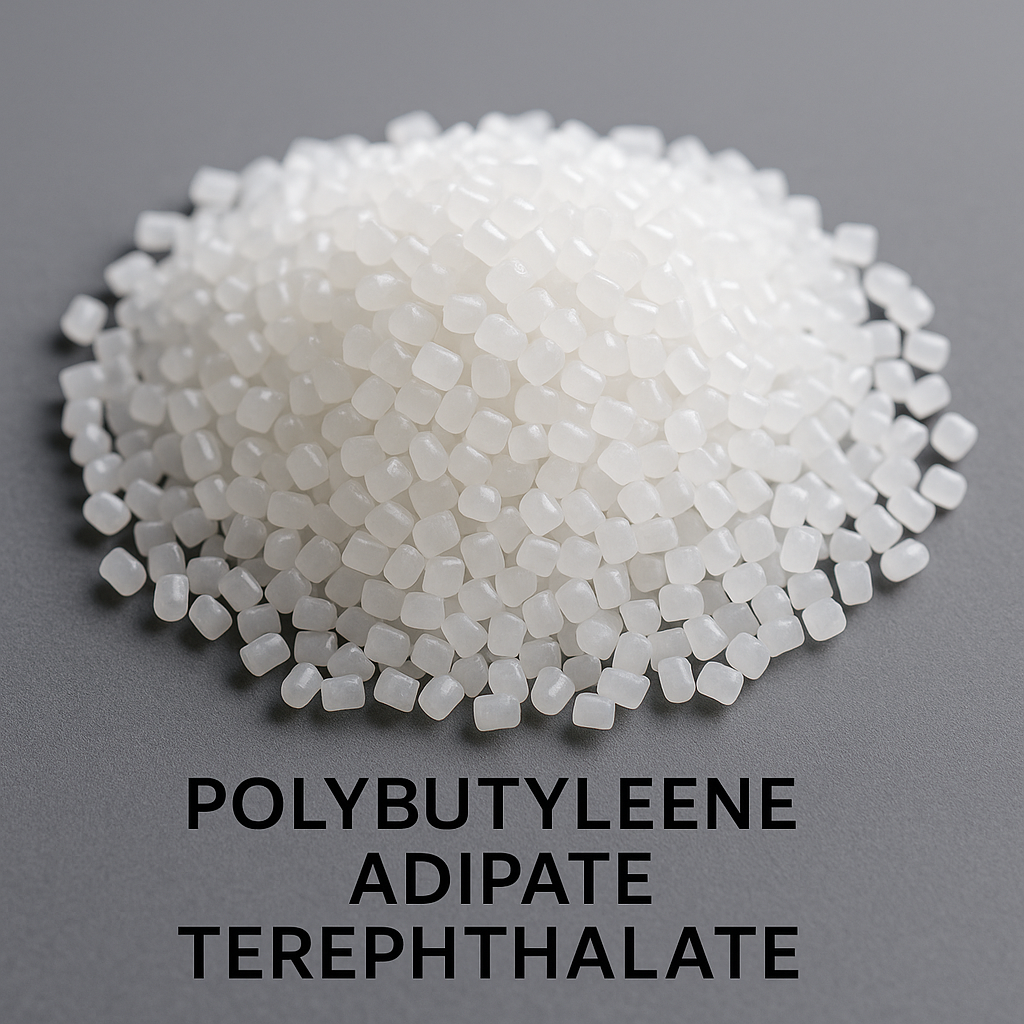Polymers are made up of very large molecules made up of many repeating units called monomers, which ultimately form this long polymer chain
PolyButylene Adipate Terephthalate (PBAT)
Poly(butylene adipate-co-terephthalate) (PBAT) is a biodegradable thermoplastic polymer that is widely used in environmentally friendly applications. It is synthesized from butylene adipate and butylene terephthalate, offering properties such as high flexibility, good impact resistance, and biodegradability. PBAT is recognized as a suitable alternative to conventional plastics like polyethylene, particularly in packaging, shopping bags, and agricultural films.
Structure of Poly(butylene adipate-co-terephthalate)
The chemical structure of PBAT consists of repeating units derived from adipic acid (AA), 1,4-butanediol (BDO), and terephthalic acid (TPA). This structure imparts PBAT with unique physical and mechanical properties, including high flexibility and adequate strength.
Structurally, PBAT is positioned between rigid polyesters (such as PET) and soft polyesters (such as PCL), which allows it to be used across a wide range of applications.
Properties of PBAT
-
Fully biodegradable under industrial composting conditions
-
Flexible and resistant to tearing
-
Processable using standard thermoplastic machinery
-
Good chemical resistance
-
Excellent transparency and aesthetic appearance for packaging
-
Compatible with other biopolymers such as PLA and starch
Applications of PBAT
-
Biodegradable shopping and garbage bags
-
Agricultural films and biodegradable mulch films
-
Food packaging materials
-
Environmental protective coatings
-
Injection-molded short-life components
-
Blends with PLA to enhance flexibility
Advantages of PBAT
-
Completely biodegradable under industrial composting conditions
-
Effective replacement for conventional petroleum-based plastics
-
Maintains acceptable mechanical performance
-
Certified under many biodegradability standards (such as EN13432 and ASTM D6400)
-
Reduces environmental plastic pollution
Disadvantages of PBAT
-
Higher cost compared to conventional plastics
-
Ineffective degradation in natural environments without proper composting conditions
-
Higher sensitivity to moisture and heat during storage
-
Requires blending with other polymers to optimize performance for certain applications
Applications
| Applications | , , , |
|---|
(PBAT)
| Applications | Process method | Density (g/cm³) | Products | Grid | Melt Flow Index (MFI) (g/10min) |
|---|---|---|---|---|---|
| Biodegradable shopping bags, garbage bags | Film Extrusion | 126,00 | PBAT 1001 | General | 2.0 – 4.0 |
| Food packaging, protective wraps | Blow Molding | 125,00 | PBAT 2003 | Resistant | 3.5 – 5.5 |
| Agricultural films, bioplastic mulch | Extrusion/Blown Film | 124,00 | PBAT 3007 | PLA Modified | 1.5 – 2.5 |
| Short-term consumables, biodegradable containers | Injection Molding | 126,00 | PBAT 4005 | Industrially Used | 4.0 – 6.0 |
| Low-cost sustainable products, simple packaging | Film Extrusion and Molding | 123,00 | PBAT 5000 | Compounded with Starch | 3.0 – 4.0 |







